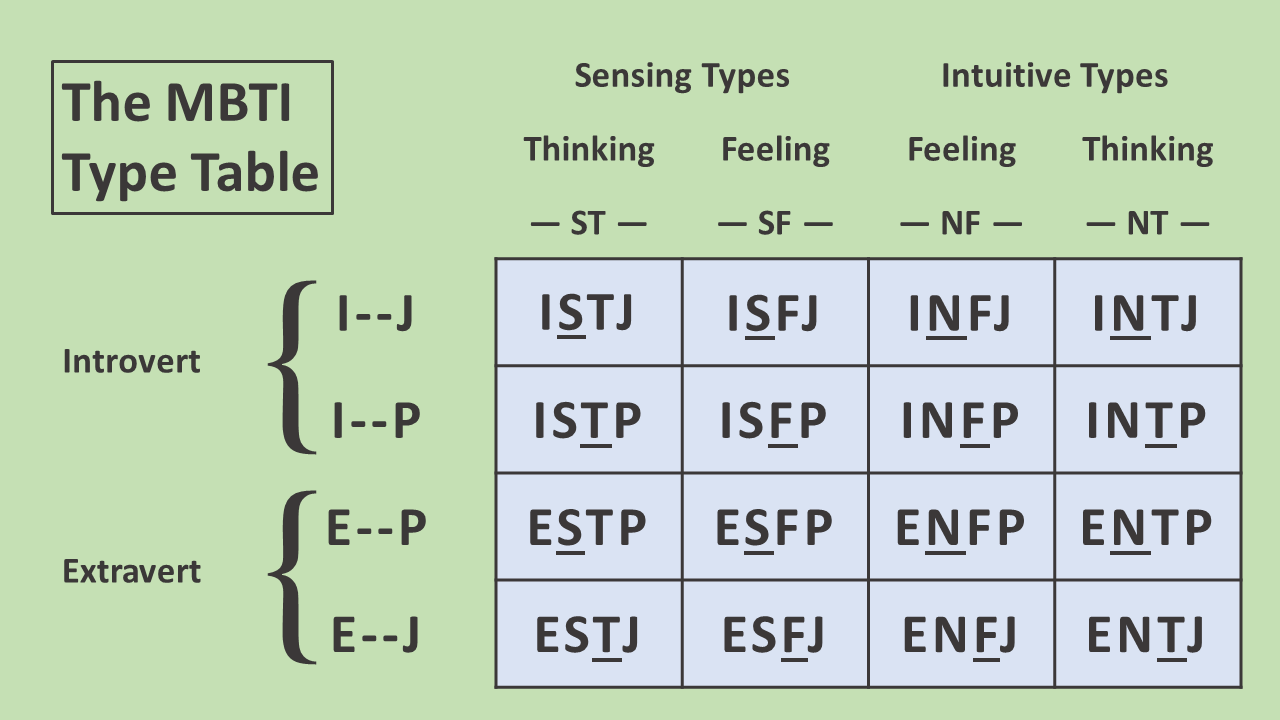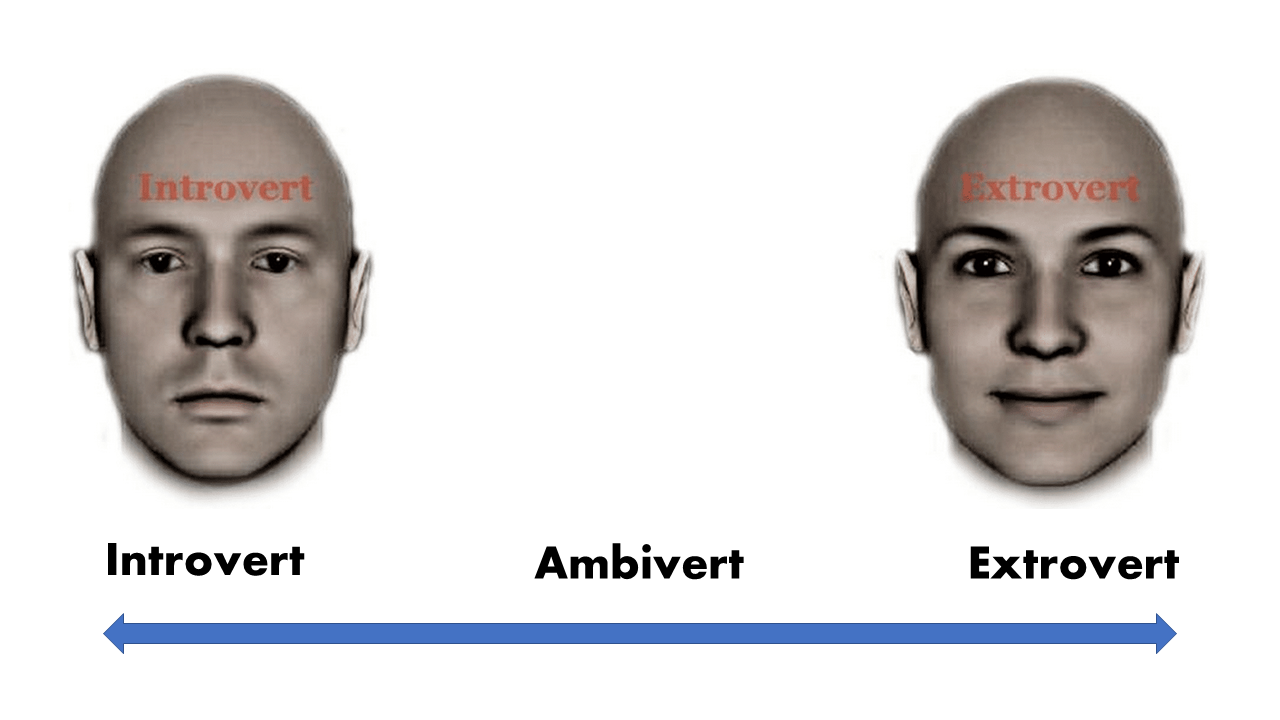Ever been frustrated by your inability to make progress in some areas of study, while other modes of learning seem to come naturally and easily to you? Are you interested in discovering learning styles that are relevant to your own personality type? This article will help you discover the best learning style for your MBTI personality type.
Knowing your MBTI personality type offers valuable insights into what works best for your personal study needs by leveraging intrinsic strengths to overcome potential roadblocks that may be hindering your progress.
Outlined below are some of the basic concepts of personality typology written from an enthusiast’s perspective. It should provide you with key pointers and links, allowing you to delve deeper into the various components of your own cognitive functions.
I’ve also included some practical examples from my own experience to illustrate this fascinating and popular topic.

A Brief Mention of Time
Whatever your position in life, the need to upgrade your skills, or progress professionally in today’s digital age means that sooner or later you’re going to be faced with the need to study. Of course, if you’re a full-time student, your course schedule virtually dictates a continuous learning curve throughout your studies. And if you’re juggling some kind of part-time job amongst all that studying, your resources may be stretched to the limit.
This raises the inevitable question: how do we fit it all in? Let’s face it, the pace of life is hectic and doesn’t look like slowing down anytime soon. So is there something we can use to help us out? Something that makes sense on an individual level, is relatively easy to understand, and won’t slow us down too much with extra study?
As a student myself, I found the following quote by a successful American author and speaker while pondering the above questions:
Time management is an oxymoron. Time is beyond our control, and the clock keeps ticking regardless of how we lead our lives. Priority management is the answer to maximizing the time we have.
– John C. Maxwell, from Taming Time
This got me thinking about my own situation. Particularly that last sentence of Maxwell’s statement. It was something about maximizing time, and how it related to my own personality type. And this basically prompts the first question central to the topic of this post.
What Is an MBTI Personality Type?
My own interest in personality types came from reading the work of Swiss psychologist Carl Gustav Jung, prominent in the twentieth century. Jung was responsible for developing the modern idea of psychological types.
These ideas were later developed by Isabel Briggs Myers and her mother, Katharine Briggs, into what’s known as the Myers-Briggs Type Indicator, or MBTI system.
Using this system, an individual’s personality qualities can be determined by identifying how four pairs of factors (or dichotomies) are expressed.
Myers’ Dichotomies
- Extraversion or Intraversion
- Sensing or iNuition
- Thinking or Feeling
- Judging or Perceiving
These eight preferences are also indicated by their first letter.
Intuition, gets the letter N so that it doesn’t get confused with Intraversion.
Cognitive Functions
The eight cognitive functions basically deal with the extraverted and introverted forms of Sensing–Intuition, and Thinking–Feeling.
They form the foundation of the 16 personality types.
From 8 Cognitive Functions to 16 Personalities
Take one of the preferences from each dichotomy and you get a total of 16 possible combinations. Voilà!
Once your personality type is known, these four letters form a code. This is your personality type.
An example would be ESFJ, which indicates Extraversion, Sensing, Feeling and Judging.
Another could be INTP, indicating Intraversion, Intuition, Thinking and Perceiving.

The dominant function of each type in the grid is shown underlined. But more on that later.
The above table also indicates that the ISTJ has dominant introverted sensing. The ESTJ, on the other hand, has dominant extraverted thinking.
In other words:
- for an Introvert, the dominant function is always introverted
- for an Extravert, the dominant function is always extraverted
So basically, you have a preference for one of each of the four pairs of cognitive functions. It appears that you are born with them and they represent your ‘default’ style of interacting. None of them are necessarily better than others. They simply indicate the way you prefer to respond to life’s situations.
So how do these four letter types apply to real people? Read on for a couple of famous examples!
Functions, Preferences and How They Relate to Learning
Many sources illustrate the preferences visually as a spectrum or sliding scale. You’re not completely extravert or introvert. One extravert can be closer to introvert than another extravert. In fact, Jung himself said that there can be no such thing as total extraversion or total introversion in a normal person all the time. Such an individual would basically be nuts (that’s not the psychological term, but hopefully, you get the idea).

The scale of introversion and extraversion is shown above. An ambivert is someone lying between the two. Ambiverts exhibit qualities of extraversion and introversion depending on the situation. The MBTI system places you closer to either introvert or extravert even though you may demonstrate ambivert qualities.
Some Learning Styles
Here’s a quick rundown of each preference.
I’ve included keywords and phrases from the perspective of learning styles:
- Extravert:
- Interactive
- Socialising
- Energised by time spent with others
- Group work
- General concepts
- Introvert:
- Reflection
- Independent study
- Energised by time spent alone
- Sensing:
- Details
- Rely on sensory stimuli
- Routine important
- What is (past and present oriented)
- Intuition:
- ‘Big Picture’ thinking
- Innovation
- Original ideas
- Pattern recognition
- Connections
- What if? (future possibilities)
- Thinking:
- Facts important
- Analysis
- Logic
- Accuracy
- Problem solving
- Feeling:
- People-focused
- Human values and needs
- Relationships with teachers and other students important
- Desire to please
- Judging:
- Keeping deadlines important
- Fear being late
- Decision based
- Task based
- Planners
- Perceiving:
- Keeping options open
- Spontaneous
- Copes under pressure
- Adapts well to new and changing circumstances
Celebrities as Students
Let’s look at some practical examples. A couple of celebrities, ‘typed’ according to the MBTI system, as promised. And I know, maybe they’re not students now, but they were at one time. And it’s never too late to learn!

Dwayne Johnson
MBTI Personality Type: ESTP
I find it fascinating how certain Hollywood actors are basically playing themselves in most of their roles. Dwayne Johnson is a classic example. Not only an ESTP personality off-screen, he invariably plays the tough, confident, ESTP physical action hero on-screen. So, we can surmise that student Dwayne would especially enjoy interactive groupwork. This would allow him to show his outgoing, fun-loving prowess.
The ESTP individual has dominant extraverted sensing. This kind of person really needs some kind of feedback from their surroundings to validate their actions. They enjoy the learning environment even more if there is a competitive element involved. Long lectures may cause them to lose interest. They would rather be outside engaging the physical environment. As a typical screen action hero, he also needs the ability to ‘think on his feet’, which represents the T and P attributes of his personality type. Dwayne doesn’t really do deadlines.

Scarlett Johansson
MBTI Personality Type: ISTP
This actress is generally identified by various online sources as being an ISTP personality. These types are usually depicted in movies as the lone action hero type. Highly analytical and hyper aware of their surroundings, especially in dangerous situations. Think James Bond, Jason Bourne, or in Scarlett’s case, any of the action hero roles she’s been seen in recently.
Logical coherence and accuracy are very important to introverted thinking types. Things have to make logical sense to an ISTP. Moreover, it needs to be the kind of logical sense that can be instantly applied to real world scenarios. As a result, this personality type will tend to reject highly theoretical material if they can see no practical application or use for it. They are not only deep and penetrating thinkers, but usually a hands-on kind of people. Think of a mechanic or crafts person, for example. That’s what dominant introverted thinking and auxiliary extraverted sensing are all about.
Student Scarlett probably prefers independent study. Additionally, mapping her thoughts and ideas out in physical form might be a suitable learning style. For instance, this could take the form of learning journals. As a perceiving type (like Dwayne), Scarlett is spontaneous and would rather ‘wing it’. Strategically setting out to meet a deadline in advance is not her favoured way of doing things. She’d rather wait for the chance of inspiration and leave meeting deadlines until the last minute. Just in case a better idea comes along.
Some Personal Examples
All of this is very much simplified. But I wanted to make the point that once you know your personality type, you can leverage its strengths in your favour. On the flipside, knowing your type’s weaknesses can help you work on them so they become less of an obstacle to your progress. Plus, you don’t need to feel guilty or stupid for not understanding a particular concept, topic, or problem the way others might. Let me take some examples from my own experience.
The Devil Is in the Detail
Wow, this is so true for me. I get myself into so much trouble for not paying attention to the details. Things like assignments and projects with many separate parts to them. This is because I’m an intuitive type. What does that mean in real terms? It means that my natural tendency is to pull back and look at the big picture. It’s more about the long-range strategy. I usually leave the details for later. Knowing my type, however, has helped highlight this tendency. Now I’m more aware of it.
This is a good time to mention the inferior function. This is the least developed area of our personality. Sensing (the opposite of intuition) is my own inferior function. As I mentioned earlier, this manifests itself as a tendency to skip over details. This is a source of frustration for me because details can be critically important to any outcome. It also makes interactivity and performance hard work. Inferior sensing struggles to engage the outer world. Group and public presentations are often difficult to negotiate for people with inferior sensing for the same reason. So where to find help?
Help Is Near
Earlier I mentioned something called a dominant function. It’s kind of our superpower. I mentioned intuition in the previous point. That’s mine. It’s where we’re most comfortable and shows up in what we do best. Our second, or auxiliary function is something like an assistant. Think of a co-pilot or navigator in an airplane. It provides help, support and balance to the dominant function.
For my type, Thinking is the auxiliary function. This was a most significant discovery for me. The auxiliary function helps not only the dominant function, but also the two weaker functions in our personality, which operate more in the background. Everyone has these weaker functions. And they’re weaker because we’re not usually very good at expressing them. So, how is my auxiliary function helping my learning and studying?
Thinking to the Rescue
Knowing my MBTI personality type comes in handy for awkward situations because I’m able to call on my auxiliary function for assistance and get things back on track. I do this by using my thinking preference. In my case, this cognitive function is more accurately known as extraverted thinking.
Extraverted thinking is:
- Highly process oriented
- Works more effectively using systems as a means of reaching its goals
- Prefers to work in a linear fashion
Since discovering this information I have become a user of visual diagrams and aids. Mind maps are a good example. They help me organise and prepare strategically to meet my goals. I never even considered them as a study aid in the past. But it really works. And also being a judging type, this suits my preference for forward planning very well.
So How Do You Find Your MBTI Personality Type?
There are many free options available online. See the suggestions below if you’re interested. Multiple choice question formats are the most common.
My advice is to use the online test results only as a guide. They are not 100% accurate for everyone. Don’t trust the first result you get.
Next, try and figure out your type by doing a bit of reading and self-analysis. Observe people in your life. Get a feel for how the preferences manifest in others.
Process of Elimination
Introvert or Extravert? It’s usually not too difficult to determine this for yourself. Ask family and close friends for their opinion if you’re not sure. This immediately narrows the choice down to 8 types.
Next easiest to pinpoint is the dominant function. Either that, or the judging–perceiving preference. Your mileage may vary.
That’s 3 preferences down. You can now be only one of 2 types.
The final trick is to figure out the auxiliary function. Mine had me stumped for a long time time because I paid too much attention to stereotyped descriptions. Be wary of sweeping generalisations since these permeate the online world of personality typology. For instance, don’t get hung up specifics. Just because someone portrays a type one way doesn’t mean that everyone of that type behaves exacty the same way.
My solution was to go deeper into the official MBTI material and also consult some excellent sources on YouTube, which included interviews with certified MBTI practitioners. Hearing people discussing their own experiences allowed me to quickly determine my type without any doubt. Think holistically about any type you are considering. And try to be honest with yourself!
Of course, you might be able to figure out your type without these challenges!
Online Personality Test Suggestions
- 16Personalities (probably the most popular and available in many languages)
- Psychology Junkie (good site for information too)
- MBTI.ai | The Smart Test (99 questions)
- Keys 2 Cognition (48 questions)
- Multi-Perspective Advanced Jung Test (144 questions!)
To conclude, there are many other personality typology frameworks out there. Each has its proponents and detractors. However, I hope this encourages you to look further into the subject.
Knowing your MBTI personality type can really help you maximize and enhance your learning style.
Thanks for reading. And congratulations for making it this far. You deserve a coffee!

What Are Your Thoughts?
Please comment below if you have you taken an MBTI personality test, or already know your type. Did you agree with the result? Do any of the learning styles resonate with you? Are you typical of your type?
Sources
The Learning Style of Every Myers-Briggs Personality Type (Psychology Junkie)
MBTI and Learning Styles (Paving the Way)
Gifts Differing: Understanding Personality Type by Isabel Briggs Myers and Peter B. Myers
Personality Database
The Art of SpeedReading People: How to Size People Up and Speak Their Language by Paul D. Tieger & Barbara Barron-Tieger
Banner photo by Felix Mittermeier on Unsplash
Hi Nigel,
thank you for this very interesting piece on MBTI personality types. I have to say I’m a skeptic when it comes to systems that are trying to generalize human behavior based on a 10 minute test. While I am curious and often read those articles that give tips on MBTI personalities I take them with a grain of salt.
Especially the first part of your article is a great summary and explanation of how MBTI works. I never new how complex the system is and that you can even determine your personality type yourself by reading through the categories.
A very long post, but you captured my interest! Great job!